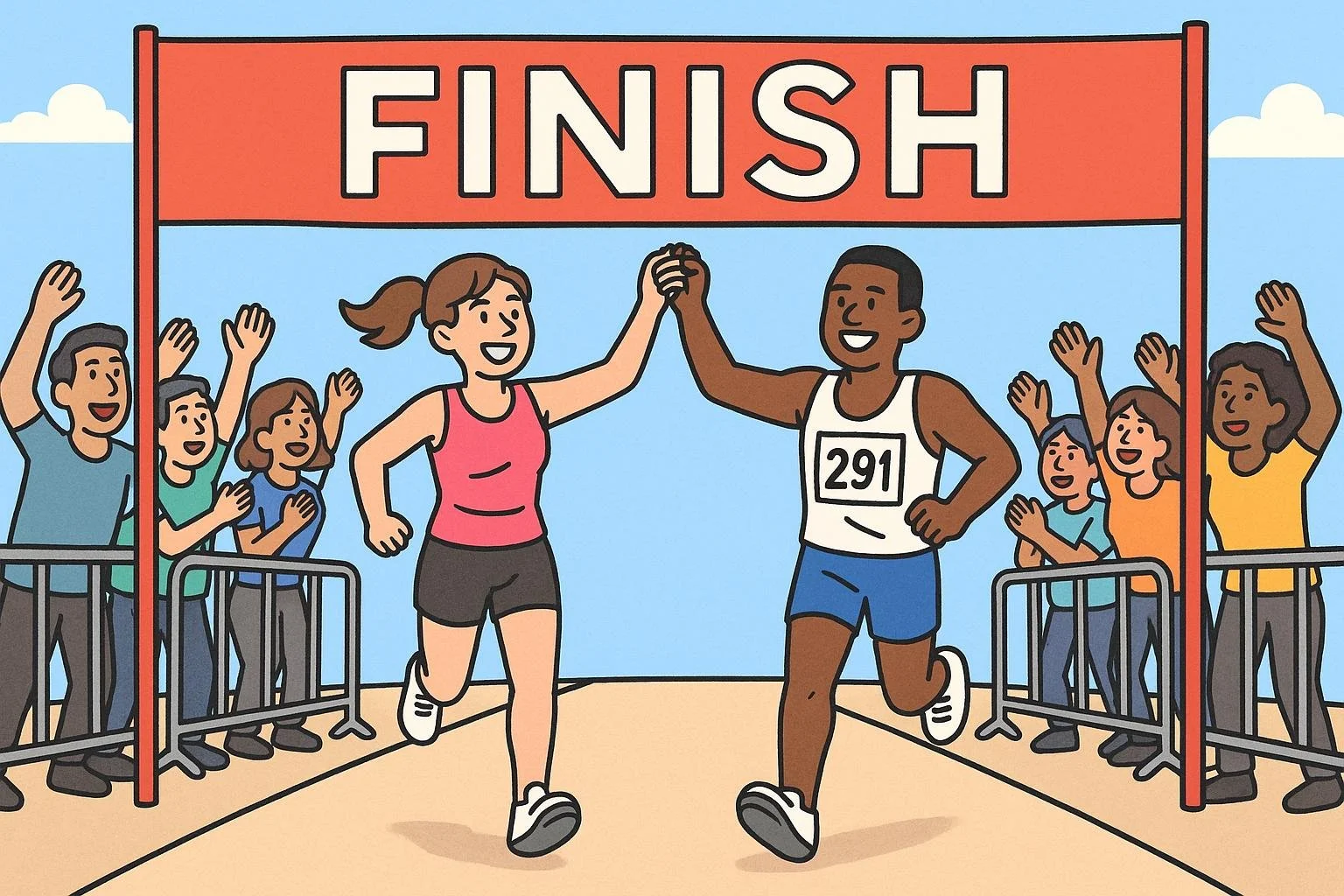Crossing the Finish Line: A Guide to Getting There (Together)
He came. You cuddled. The end?
If that sounds familiar, you’re not alone. There’s a well-documented “orgasm gap” between cisgender men and women during partnered sex — meaning people with penises tend tofinish far more often than those with vulvas. That’s not because one body is better designedfor pleasure — it’s because the game is often rigged.
This isn’t about turning orgasm into a performance metric. Sex can be amazing without one, and you don’t need to climax to count it as real. But pleasure should feel mutual — and if you’re consistently left out of that part, you deserve better.
Let’s Talk About the Brain First
Your brain is the biggest sex organ you’ve got. And it’s picky.
If you’re stressed, anxious, disconnected, or just not in the mood — no amount of touching will change that. Some people get turned on by physical stimulation. Others respond more to the emotional connection they feel with their partner. Both are normal. The key is knowing what turns you on, so you can make sure that’s part of the equation. Also: if you’re not really into it — if you’re doing it mainly for their pleasure, not yours — that’s not a setup for success. One of the first steps is asking: why don’t I want it right now?
Common reasons include:
- Feeling disconnected from your partner
- Not trusting them
- Work or life stress
- Grief or emotional burnout
- Trauma (even if it’s been “dealt with,” it can resurface unexpectedly)
If you’ve had good sex with someone before but things have changed, it might be worth exploring that together — and possibly with a sex therapist.
Solo First: Know Your Own Body
Masturbation isn’t a consolation prize. It’s research.
Knowing what kind of touch, pressure, rhythm, or fantasy works for you is a huge part of learning how to get there with a partner. Don’t feel guilty for exploring — that knowledge is power. Plus, it gives you something to bring to the table (or the bed).
Partnered Play: Communication Is Lube
Yes, we know — just tell them what you want. But that can feel awkward, vulnerable, or even embarrassing.
Try showing instead of telling. Use humor. Use metaphors. Make it playful, not clinical. And remember, good communication doesn’t kill the mood — it makes it. And sometimes the best time to talk about sex... is not during sex. Having the conversation over dinner, on a walk, or curled up on the couch takes the pressure off and lets you explore desires without the clock ticking. No performance required — just curiosity.
It’s Not Just One Button
The clitoris isn’t a doorbell. It’s a whole internal structure, and most of it is inside.
Penetration alone doesn’t work for most people with vulvas — in fact, studies show fewer than 20% climax from that alone. External stimulation is often the key, and it’s not always about “faster” or “harder.” Think pressure, rhythm, and consistency.
And if you’re the partner doing the touching — pay attention. If they’re breathing heavier, pulling you closer, or moaning more, don’t switch it up. That means it’s working. This applies no matter your gender — feedback is everything.
If you’re with someone whose body is similar to yours (like in vulva-to-vulva sex), it might feel like you should automatically know what to do. But every body is different. Talk to your partner about what gets them going — and trade tips and tricks along the way.
And remember: when it comes to getting turned on, foreplay isn’t just a warm-up act — for many people, it’s the main event. So if you’re hoping to cross the finish line? Don’t skip the opening ceremony.
What If It Still Takes a While?
That’s okay.
Many people with vulvas take longer to reach orgasm — and that’s not a flaw. Sometimes it’s about building slowly, teasing, and delaying the finish line. (In sex nerd terms, that’s called edging.)
Slow doesn’t mean boring — it means your body is doing its thing. And if you’re enjoying it along the way? You’re already winning.
Aftercare: The Other Kind of Finish Line
Check in. Laugh. Cuddle. Compare notes. It’s not weird — it’s bonding.
Even if everything didn’t go perfectly, there’s value in talking about what felt good and what you might try differently next time. Pleasure is a skillset, not a quiz you pass or fail. The more you experiment, the more you learn.
Toys, Tools, and Tricks
If fingers and mouths aren’t getting it done, try tools. Vibrators, suction toys, lube, erotica, mirror play — these aren’t cheats. They’re aids.
Some couples find that adding a vibrating ring helps deliver clitoral stimulation during penetration - giving both partners a better shot at crossing the finish line together!
You can also explore things like roleplay, fantasy scenarios, or even just setting the mood with music, lighting, or scent. For some people, turning on means turning off distractions —that might mean locking the door, silencing your phone, or reclaiming the mental space to actually enjoy it.
Adding something new can help you learn what you like and bring more excitement (and success) into the experience. Plus, who said you have to do it all yourself?
There’s No One Way to Finish
Orgasms are awesome. But they’re not the only goal. And the more we understand our bodies — and how we connect — the easier it gets to cross the finish line together.
So go slow, be curious, and don’t settle for less than a mutual win.
The post contains affiliate links (because we gotta pay the light bill). As an Amazon Associate, we earn from qualifying purchases at no extra cost to you - but don’t worry: we only recommend products we truly believe in. 
